- Best Wedding Invitation Websites for 2024 - December 8, 2023
- Best Wedding Planning Apps this Year - December 7, 2023
- 11 Best Wedding Registry Websites for 2024 - December 4, 2023
Sapphire is a staple in the world of stones, and rightly so. This stunning ring naturally forms in its magnificent array of colors, making it easy to sell with minimal enhancements that might damage the ring or its value. Sapphire, the birthstone of September, is also extremely durable – second only to the widely known diamond. These, and many other facts about the stone, make sapphire an easy choice for couples awaiting their upcoming nuptials. Before buying a ring embellished with this brilliant stone, it is important to be well versed in the mineral itself and all the factors of buying a tanzanite embellished ring, ownership, and upkeep.
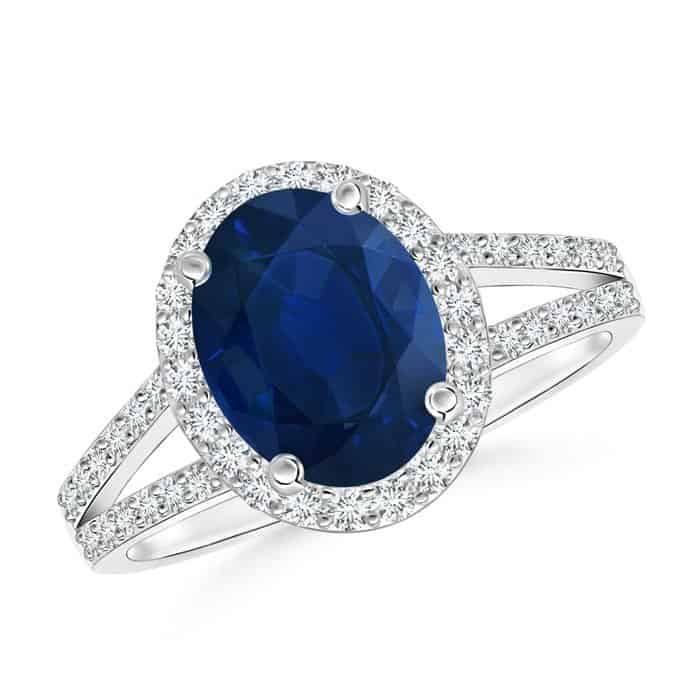
Sapphire Properties
Sapphire is an extremely stable – scratch resistant and durable, Sapphire is a no-brainer for couples that want a durable stone at a rate more affordable than a diamond. Rather than overwhelming you with a list of useless knowledge, we will narrow the important factors down to two simple components of Sapphire that we find most useful to the average consumer.
First, Sapphire sits at an astonishingly high on its level of durability. On the hardness scale, Sapphire is at a 9.0, making it scratch resistant to matters that fall at a lower number than 9. To test the authenticity of your Sapphire gemstone, scratch the surface with an item that is in the 9 range of the hardness scale – a fingernail, for example, sits at a low 2 – if your nail leaves a scratch on the Sapphire, the stone you’re dealing with isn’t authentic.
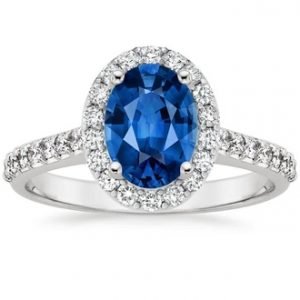
If you’re well versed in testing specific gravity, the specific gravity of Sapphire is 4.00. If none of that made sense to you, don’t worry, it doesn’t to the majority of consumers. A quick Google search will turn up easy to follow steps on testing for specific gravity and, if you’re unconvinced as to the authenticity of your stone, they may make for a useful experiment.
Colors of the Sapphire Rainbow
Sapphire falls into the Corundum family – which is the family of stones that also encompasses the ruby. Essentially, the difference between a ruby and a sapphire is in the color – a ruby is a red corundum while a sapphire varies in the remaining colors.
Sapphires of all colors will show a secondary color. The most popular secondary color for any color Sapphire is purple; the second most popular is white. The most unpopular secondary colors are greens and yellows. The most popular primary color for the Sapphire is blue.
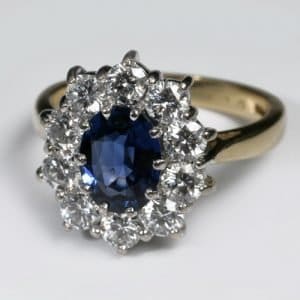
Sapphire Enhancements
Sapphires undergo several enhancements that vary in the way in which the alter and affect the stone, and in the value with which they depreciate the stone.
Sapphire is sometimes heated to alter the color of the stone. Heating sapphire will improve the overall color and make the shades uniform. This is an extremely common treatment and, unless stated otherwise, it should be assumed that a sapphire has been heat treated. Heat treatment has an extremely minimal effect on the value of the stone and no effect on its quality.
Surface Diffusion is another common enhancement. Surface diffusion is used to intensify the shade of the stone. While it doesn’t affect the stone immediately, a Sapphire stone that has undergone surface diffusion cannot be recut or polished in the future which may be a factor to consider. Sapphire stones that have undergone this enhancement also suffer a moderate decrease in value.
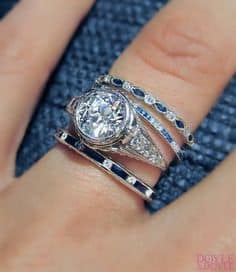
Finally, some Sapphire stones undergo irradiation. Irradiation is commonly used to intensify the yellow and orange hues in Sapphires to produce the highly desired shades of a Padparscha Sapphire. Stones that undergo irradiation will fade quickly upon exposure to light and head and, as such, demand more delicate care. A method of irradiation called Beryllium is attained through lattice intrusion – this method is controversial because it limits the ability to cut or polish a stone but it often isn’t label and is done in such a manner that it can only be identified through expensive lab tests.
Caring for Sapphire
Untreated Sapphire is extremely durable and needs little special care to maintain the stone. However, despite its high durability, Sapphire can still be scratched and chipped by harder stones and items. Sapphire is not damaged by heat or direct sunlight, but as with any stone, it is recommended to clean your Sapphire with a soft cloth and warm water and soap.
It is important to remember that Sapphire can be scratched by matters that hold a hardness level of 9.0 or higher so it is smart to store your beautiful gem encrusted ring in a secured box, pouch, or away from any diamonds or products that may flaw the stone.
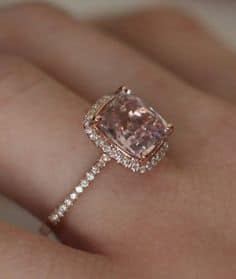
As with any fine stone, it is recommended to remove your ring prior to exposing your hands to harsh household chemicals or chlorinated pools. Over time, Sapphire will need to be buffed and polished to restore its luster.
An enhanced Sapphire stone may require special care that exceeds that of an untreated one, which in an important factor to keep in mind when shopping for your stone.
Spending on Sapphire
The price of a sapphire stone will depend first on the color, and second on the carat, cut and clarity. As we’ve previously discussed, the most coveted sapphire stone is blue with secondary hues of purple and white – a stone of this shade will cost about $1,000.00 per carat, an untreated stone of this shade will double that. The most expensive sapphire color is the Padpradasch Sunset Sapphire which will run its buyer an impressive $5,000.00 to $15,000 carats. All other stones run around $500.00 per carat with the least expensive shades being brown, gray and clear.
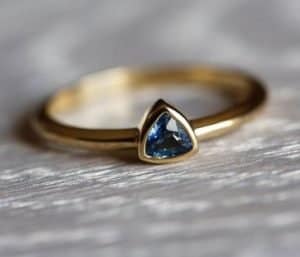
Other factors to consider when looking at the price of a Sapphire are inclusions. Most, if not all, Sapphires contain inclusions but the inclusions of the more valuable stones won’t be visible to the naked eye. What more, in terms of the Padpradascha Sapphire, a stone that is larger than one carat will triple, if not quadruple, in per carat cost.
Fun Facts!
- The blue sapphire might be as popular as it is, in part, due to its significance in pop culture. Both Kate Middleton and Princess Diana’s engagements rings contained sapphire, bringing meaning to the term “royal blue”.
- Sapphires symbolize truth, sincerity and nobility.
- In the middle ages, sapphires were worn by clergy. Blue sapphires were believed to be symbolic of heaven.
Am I ready to buy?
Absolutely! But we’d like to reiterate some key facts before you’re on your way.
1. If you have Sapphire stone and want to get it cut down to make a custom cut ring, be sure to take your ring to a professional jeweler or gemologist. A quality custom cut will increase the value of your stone exponentially.
2. Sapphireis a versatile stone that can be purchased in numerous cuts and accents a wide array of bands – shop around to ensure optimum satisfaction with the ring you decide to go with.
3. When buying a used or antique gem, make sure to get it inspected by a certified gemologist for imperfections that may not be visible to the naked eye. When buying Sapphire and diamond ring, be vocal in wanting certifications on the diamonds that you’re buying.
4. A lot of ill-informed jewelers might try to sell you a synthetic Sapphire, or attempt to pass colored glass as Sapphire – stay aware of this when shopping for a Sapphire gem. If you have any doubts in regards to the authenticity of your stone, take it to a professional gemologist to authenticate the stone.